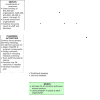Diffusing a research-based physical activity promotion program for seniors into diverse communities: CHAMPS III
- PMID: 16539792
- PMCID: PMC1563966
Diffusing a research-based physical activity promotion program for seniors into diverse communities: CHAMPS III
Abstract
Introduction: Increasing the physical activity levels of older adults through diffusion of successful research-based programs into community settings is challenging because of differences between research and real-world settings. This project diffused the Community Healthy Activities Model Program for Seniors (CHAMPS) II, an individual-level research-based physical activity promotion program, through three community organizations to reach lower-income and minority (primarily Hispanic or Latino and African American) seniors.
Methods: Through an academic-community partnership, university staff worked with each organization to adapt the program to be appealing and effective, enable their staff and volunteers to provide the program, increase participants' physical activity, and leave sustainable programs in place. Evaluation was based on methods recommended by the Centers for Disease Control and Prevention.
Results: The adapted programs, referred to as CHAMPS III, differed from the original program and among organizations. Group-based components and resource guides were included and new features were added; however, individualized components were not offered because of limited resources. A total of 321 people enrolled among three organizations; there was a trend toward increased physical activity at two organizations (an estimated increase of 481 kcal/week [P = .08] and 437 kcal/week [P = .06] expended in physical activity). Evaluation revealed challenges and unexpected community-level benefits. All organizations are continuing efforts to promote physical activity for older adults.
Conclusion: This project enabled community organizations to implement physical activity promotion programs. The overarching challenge was to retain original program features within each organization's resources yet be sustainable. Although the programs differed from the original research program, they were a catalyst for numerous community-level changes. Our findings can guide similar projects to reach underserved older adults.
Figures
References
-
- U.S. Department of Health and Human Services. Healthy people 2010. Washington (DC): U.S. Department of Health and Human Services, U.S. Government Printing Office; 2000.
-
- National blueprint: increasing physical activity among adults age 50 and older. J Aging Physical Activity 2001;9(Supplement):1–28.
-
- U.S. Department of Health and Human Services. Physical activity and health: a report of the Surgeon General. Atlanta (GA): U.S. Department of Health and Human Services, Centers for Disease Control and Prevention, National Center for Chronic Disease Prevention and Health Promotion; 1996.
-
- American College of Sports Medicine Position Stand. Exercise and physical activity for older adults. Med Sci Sports Exerc. 1998;30(6):992–1008. - PubMed
-
- Moreau KL, Degarmo R, Langley J, McMahon C, Howley ET, Bassett DR, et al. Increasing daily walking lowers blood pressure in postmenopausal women. Med Sci Sports Exerc. 2001;33(11):1825–1831. - PubMed


